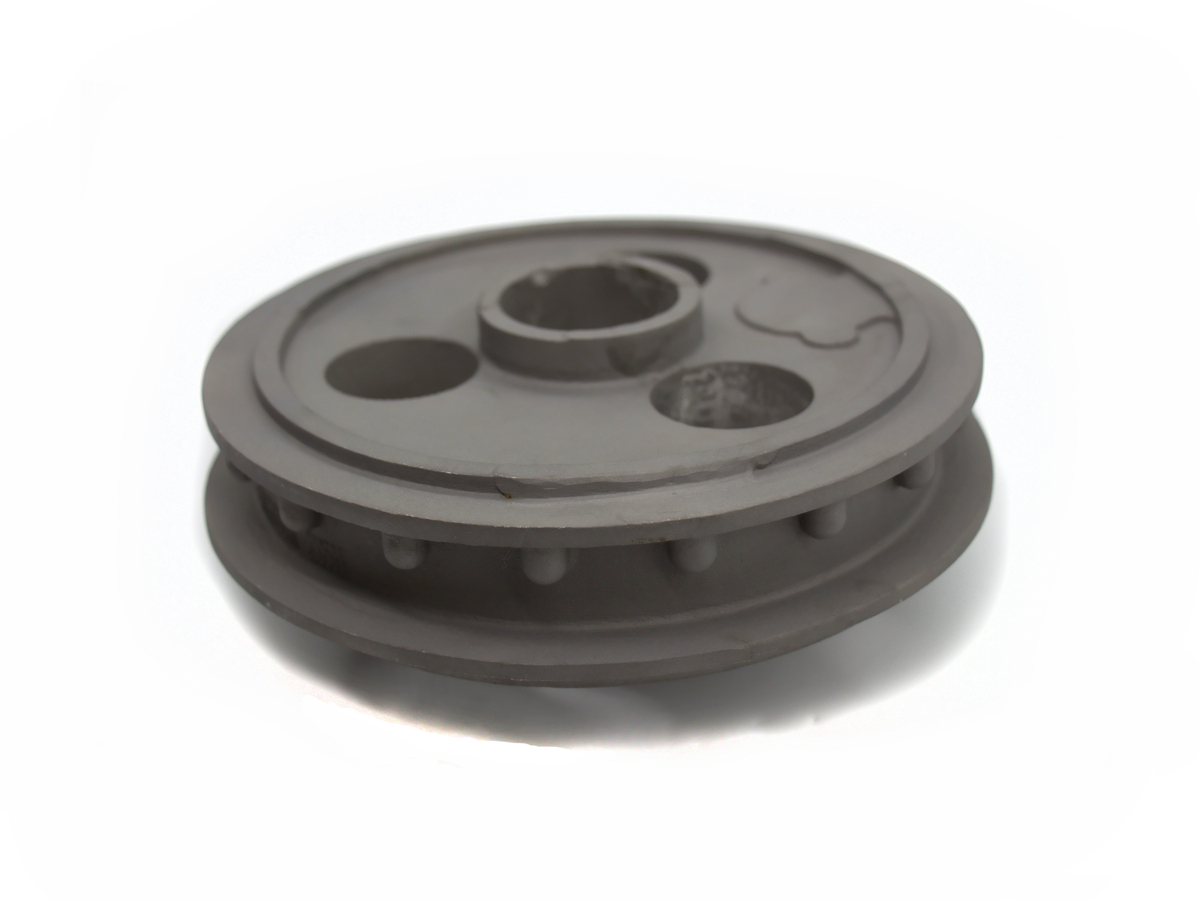High-Performance CNC Machining for Control System Components in Nuclear Plants
Introduction to CNC Machining in Nuclear Control Systems
Control systems in nuclear power plants are critical for operational safety, reliability, and efficiency, demanding precision-engineered components capable of enduring extreme conditions such as radiation exposure, temperatures up to 800°C, and chemically aggressive environments. High-performance CNC machining provides the necessary precision (±0.003 mm accuracy) and superior surface finishes for manufacturing essential control system parts, including actuator mechanisms, control rods, precision valves, sensor housings, and structural components within the nuclear, power generation, and industrial equipment sectors.
Utilizing advanced CNC machining processes, manufacturers ensure that nuclear plant control systems operate effectively, adhering strictly to regulatory standards, enhancing overall plant safety and operational reliability.
Material Comparison for CNC Machined Nuclear Control Components
Material Performance Comparison
Material | Tensile Strength (MPa) | Radiation Resistance | Corrosion Resistance | Typical Applications | Advantage |
|---|---|---|---|---|---|
1200-1390 | Excellent | Exceptional | Control rod drives, actuator components | Superior strength and stability under radiation | |
485-620 | Good | Excellent | Valve housings, sensor components | Excellent corrosion resistance, weldability | |
790-900 | Excellent | Exceptional | Precision valves, chemical sensing units | Outstanding corrosion and chemical resistance | |
900-1000 | Good | Excellent | Structural supports, lightweight assemblies | High strength-to-weight ratio, corrosion resistance |
Material Selection Strategy for CNC Machined Nuclear Control Components
Selecting the right materials for nuclear control systems involves considering radiation resistance, thermal stability, corrosion performance, and mechanical properties:
Control rod drive mechanisms and actuator components experiencing high radiation and elevated temperatures (up to 700°C) significantly benefit from Inconel X-750 due to its exceptional strength, stability, and radiation resistance.
Sensor components, valve housings, and cooling system parts frequently utilize Stainless Steel SUS316L for its excellent corrosion resistance, ease of fabrication, and reliability under operational conditions.
Precision valves and chemical monitoring components in highly corrosive environments leverage Hastelloy C-276, delivering exceptional chemical and corrosion resistance, crucial for maintaining accurate and reliable control system operations.
Structural supports and lightweight components requiring a high strength-to-weight ratio and corrosion resistance employ Titanium Alloy Ti-6Al-4V, reducing component weight without compromising mechanical integrity.
CNC Machining Process Analysis for Nuclear Control Components
CNC Machining Processes Performance Comparison
CNC Machining Technology | Dimensional Accuracy (mm) | Surface Roughness (Ra μm) | Typical Applications | Key Advantages |
|---|---|---|---|---|
±0.003-0.01 | 0.2-0.5 | Complex actuator parts, sensor housings | Exceptional precision, complex geometries | |
±0.005-0.01 | 0.4-1.2 | Cylindrical control rods, valves | High accuracy, efficient production | |
±0.002-0.005 | 0.1-0.4 | Intricate control mechanisms, precision assemblies | Precise, stress-free internal machining | |
±0.002-0.005 | 0.05-0.2 | Sealing surfaces, precision valves | Ultra-precision finishes, excellent surface integrity |
CNC Machining Process Selection Strategy for Nuclear Control Components
Choosing appropriate CNC machining processes for control system components requires evaluating component complexity, accuracy, surface finish requirements, and operational demands:
Complex actuator components, sensor housings, and intricate structural parts requiring tight tolerances (±0.003-0.01 mm) greatly benefit from Multi-Axis CNC Milling, achieving precise geometries and reliable performance.
Cylindrical control rods, valve bodies, and precision fittings needing consistent accuracy (±0.005-0.01 mm) efficiently utilize CNC Turning, providing dependable dimensional stability.
Control rod drive mechanisms and internal assemblies with intricate features and tight tolerances (±0.002-0.005 mm) employ EDM machining for precision and to avoid mechanical stresses during fabrication.
High-precision sealing surfaces, valve seats, and critical mating components demanding exceptional surface finishes (Ra ≤0.2 μm) and ultra-high accuracy (±0.002-0.005 mm) utilize CNC Grinding to optimize reliability and longevity.
Surface Treatment Solutions for Nuclear Control Components
Surface Treatment Performance Comparison
Treatment Method | Radiation Resistance | Corrosion Resistance | Max Operating Temp (°C) | Typical Applications | Key Features |
|---|---|---|---|---|---|
Excellent | Excellent (~1500 hrs ASTM B117) | Up to 1200°C | High-temperature actuator parts, control rod mechanisms | Superior thermal insulation, oxidation protection | |
Good | Excellent (~1000 hrs ASTM B117) | 300 | Stainless steel sensor components, valve housings | Enhanced corrosion protection, cleanliness | |
Excellent | Outstanding (~1500 hrs ASTM B117) | 500 | Precision valves, moving assemblies | Superior wear resistance, durability | |
Excellent | Excellent (~1200 hrs ASTM B117) | 550 | High-wear actuator shafts, precision rods | Increased surface hardness, fatigue strength |
Surface Treatment Selection Strategy for CNC Nuclear Control Parts
Selecting the appropriate surface treatments enhances corrosion resistance, durability, and radiation stability:
High-temperature actuator parts and control rod mechanisms exposed to extreme heat conditions significantly benefit from Thermal Barrier Coatings (TBC), providing exceptional thermal insulation and oxidation protection up to 1200°C.
Passivation of stainless steel sensor components and valve housings ensures improved corrosion resistance and cleanliness, critical for accurate, long-term sensor performance.
PVD coating is ideal for precision valve components and moving assemblies, significantly enhancing their wear resistance, durability, and overall operational reliability.
High-wear components such as actuator shafts and precision mechanical assemblies utilize Nitriding, improving hardness, fatigue life, and performance consistency.
Quality Control Standards for CNC Machined Nuclear Control Components
Quality Control Procedures
Dimensional inspections using Coordinate Measuring Machines (CMM) and advanced optical metrology.
Surface roughness measurements with precision profilometers to verify compliance with nuclear standards.
Mechanical property verification (tensile strength, hardness, fracture toughness) according to ASTM and ASME regulations.
Radiation and corrosion resistance testing under realistic operational conditions.
Non-destructive testing (ultrasonic, radiographic, eddy-current) ensuring structural integrity and defect-free parts.
Comprehensive documentation and traceability compliant with ISO 9001, ASME NQA-1, and nuclear industry regulations.
Industry Applications of CNC Machined Nuclear Control Components
Typical Applications
Control rod drive mechanisms and actuator assemblies.
Precision valve bodies and sealing surfaces.
Sensor housings and instrumentation components.
Reactor control systems and emergency shutdown devices.
Related FAQs:
Why is CNC machining critical for nuclear plant control system components?
What materials offer optimal performance for nuclear control parts?
Which CNC machining methods provide the highest precision for nuclear control systems?
How do surface treatments improve nuclear control component reliability?
What quality standards must CNC machined nuclear control components meet?

